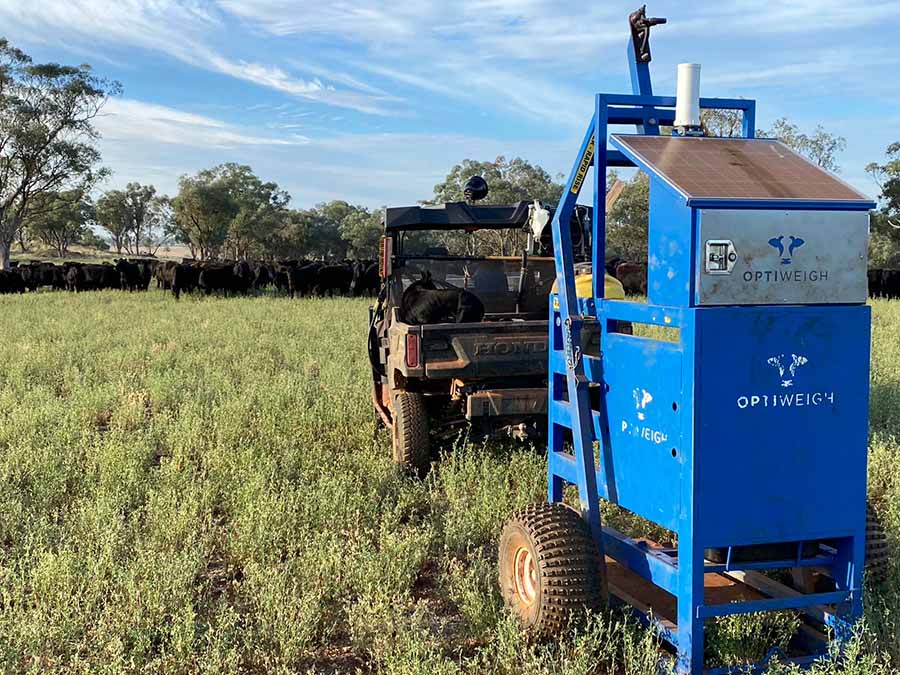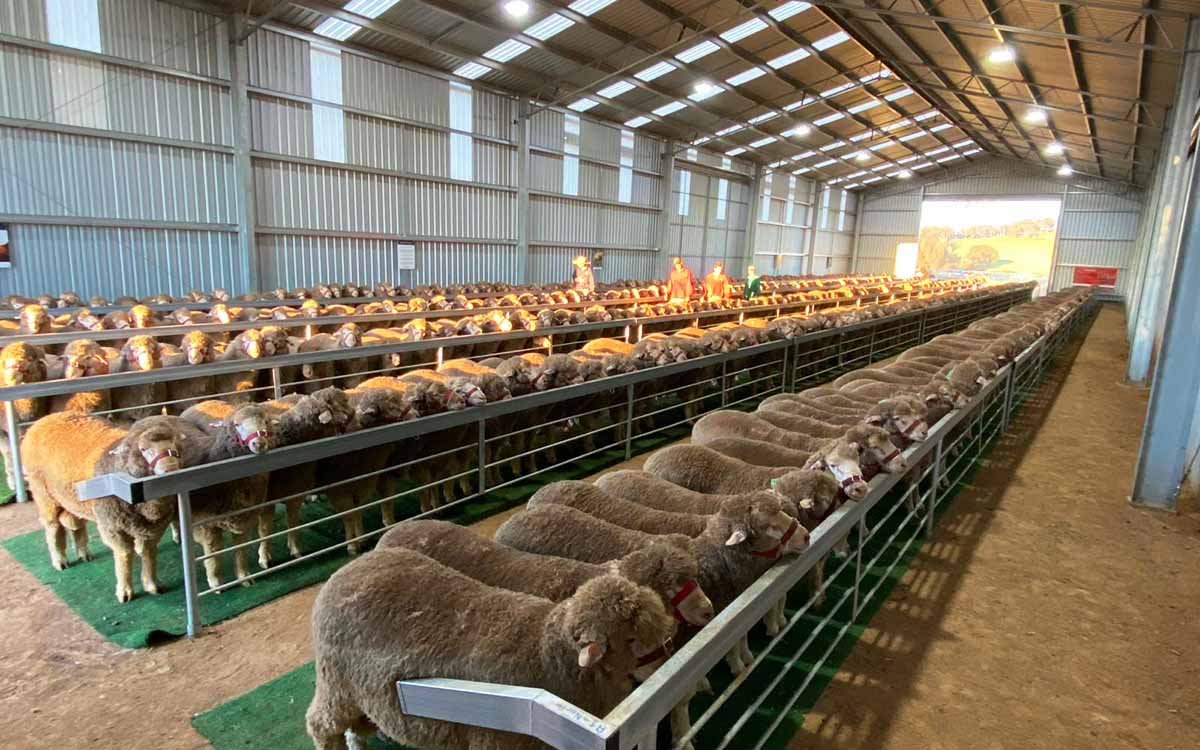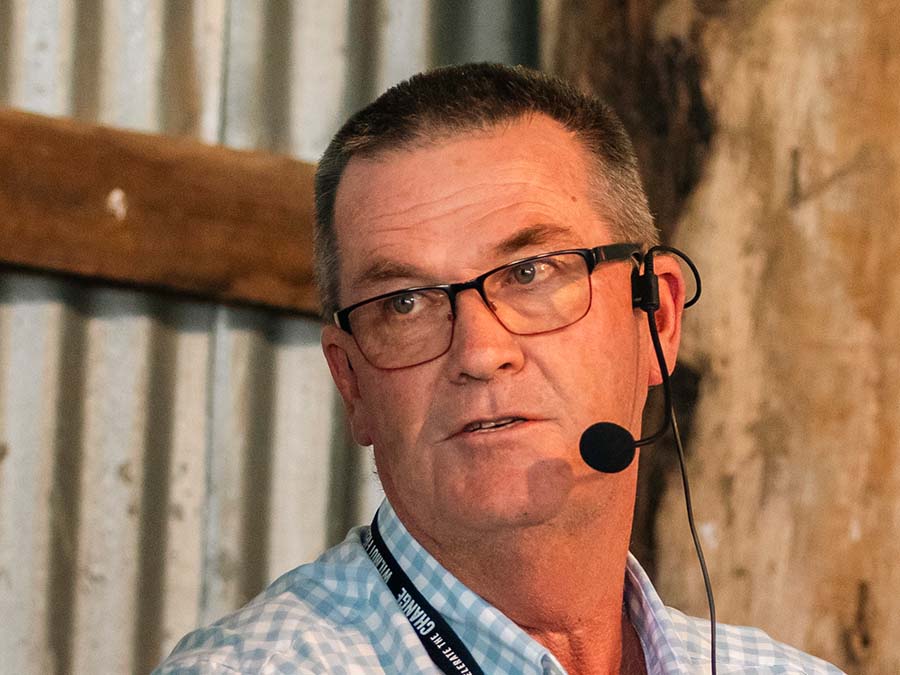Jotting down numbers on a pair of beige jeans might seem bizarre, but Nigel's use of grazing charts and DSE days has proved to be a winner for almost two decades. One of the best examples was a massive Angus heifer trade Nigel completed in 2020. Big rain grew good feed, and the Kerin Ag country was understocked. Nigel assessed the levels of feed, worked out how long he could feed stock knowing how many DSE days he had, and then set about buying more than 2500 Angus heifers to graze the country. The heifers were artificially inseminated to a well-known bull, and sold in calf.
To say it was a success was an understatement - selling joined Angus heifers at a time when the beef world wanted to restock generated millions of dollars in profit. They had been bought in late spring, were on the property for four months then sold in a swift turnaround. But there was little luck in this. It was careful financial management that allowed Kerin Agriculture to take advantage of the unseasonal rain and jump on the opportunity when it arose.
'We won't buy in stock unless we see the feed ahead of us,' Nigel says.
'We won't buy in stock unless we see the feed ahead of us,' Nigel says. 'You need to be able to manage stocking rate to carrying capacity, but you need to know who you are going to sell them to and you will know when the time is right based on your feed budget, Nigel says. 'We have to become better at managing the good times - in a wet spring, pastures will be grazed, and grow again, and grazed and grow again and if you don't get that feed eaten, it will become moribund and be worthless.' The big Angus heifer trade is what Nigel calls his 'Alan Bond' moment and he reckons these are few and far between. There are other examples though, of when being savvy about his feed base has worked well.
 Feed budgeting and monitoring average weight gains using the Optiweigh system allow Nigel to forecast his business outcomes easily.
Feed budgeting and monitoring average weight gains using the Optiweigh system allow Nigel to forecast his business outcomes easily.
Five years ago, he was offered 580 well-bred Angus heifers for $2.80/kilogram. The business process kicked in. Nigel assessed his feed levels on an area of leased country, realised he could carry them for 12 weeks based on pasture levels, and said yes. Those cattle were sold at the end of the 12 weeks at $4.20/kilogram after gaining weight. That little venture was enough to cover the lease payments for the following three years. Underlying every decision is a strong understanding of the financial position and knowing how much can be spent, and an equally strong understanding of pasture feed reserves.
The finances mean he knows he can buy the stock, and the pastures mean he knows he can feed them.
The finances mean he knows he can buy the stock, and the pastures mean he knows he can feed them. He also pays little attention to long-term weather forecasts, preferring to base his decisions on assessments of his own country and feed base. 'The 2023 talk of El Nino had zero effect on our business,' Nigel says. 'If an El Nino is declared, then it doesn't change the amount of money we have in the bank or our grass budget.' Nigel's business mind means he sees himself as the chief executive officer, and believes his most important role at the moment is to make any change in the climate work for the business. He, in his own words, 'battle tests' every decision based on facts and figures and not emotion.
The Kerin Agriculture portfolio continues to expand. Much of that business growth over the past 15 years has been driven by "harnessing the opportunities created from a highly variable climate'. While some may fear change, Nigel says there needs to be a paradigm shift in the way farmers think about it - whether it is climate, new methods or even new genetics.
'When I hear of something new, I think about what it will cost the business if I don't change, rather than the cost to the business,' he says. 'We need to stop sabotaging our futures with past thinking and mindsets.'






